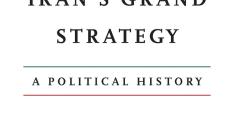Book Review - Nations Torn Asunder: The Challenge of Civil War

Nations Torn Asunder: The Challenge of Civil War by Bill Kissane. Oxford: Oxford University Press, 2016. 285 pp., £18.99 hardcover 978-0-19-960287-2
This book deals with the proliferation of civil wars since the end of World War II and analyses what factors make this contemporary challenge different to episodes of violence in the past. It is one of the first accounts addressing the issue of civil war from a comprehensive point of view. The field of study is summarized and critiqued, integrating the most recent available data with historical concepts and interpretations. Have we moved to a more violent world? Is there something in human nature predisposed to divisiveness and violence? Or is civil war the result of situational factors? Is the nature of contemporary violence fundamentally different than in past episodes of history? What – if any – are the differences in terms of the causes, patterns, and experiences of civil war?
The historian and political scientist Bill Kissane tries to answer these questions through an analysis of cases and interpretations of both historic and contemporary nature. This combination makes the book compelling reading. An Associate Professor in Politics at the London School of Economics, and member of its Conflict Research Unit, Kissane is the author of numerous books on the topic, including an exhaustive and well-known study of the Irish Civil War (The Politics of the Irish Civil War, 2005). His imprimatur as a historian is evident in the book.
The book summarizes and evaluates the literature about civil war of the last two decades and what the different strands of that literature suggest about the causes, patterns, consequences of, and potential remedies for civil war. The author traces the concept through the work and words of Thucydides, Thomas Hobbes, Immanuel Kant, Hugo Grotius and contemporary Stathis Kalyvas, among others, and artists including the painter Francisco de Goya. The analysis goes from the concept of stasis in ancient Greek to Rome, the US, Spanish and Greek civil wars, Algeria in the 90s and Syria today.
The pervasiveness of civil conflict after World War II and after the collapse of the USSR has been the source of a new and systematic literature on the subject, especially since the 1990s. Two main international currents were intertwined in this period: globalization as a trend to international convergence on the one hand, and the fragmentation of empires and later of states on the other. Part of these studies and their orientations reflect the policy challenges created by these wars: a developmental challenge (as the gap between regions of the world increases, a tendency accelerated due to these wars); a security challenge (countries in civil war as potential sources of terrorism); and a humanitarian challenge (for the human suffering caused by violence, accessible worldwide through the media and for a while putting peacemaking at the heart of foreign policy). Added to all of them is a paradigm challenge, as these violent episodes defy explanations based on old paradigms of ideological conflict or anti-colonial struggles.
Broadly speaking, most of the literature has followed a pattern of inquiry based on patterns, causes, consequences, and responses. This is reflected in the overall structure of the book. After the introduction, the second chapter discusses civil war in history through the comparison of three conceptions of civil war, all of them taken from periods when significant changes in perspective took place. The first is “civil war”, used since Roman times and analysed through the writings in this period. The second is “internal wars”, a concept that started to be used in the 1960s when the nuclear standoff prevented international wars, while decolonization led to the creation of more than 130 states. And the third is “new wars”, used since the 90s as an attempt to describe civil wars in the context of globalization. Each conception is “a window on the unique worlds they sprang from, but also a part of a general and ongoing intellectual tradition that began with the Greeks” (p. 64).
The third chapter examines patterns, notably the pattern towards less interstate wars and more intrastate wars. Coupled with this, trends across geographical regions and within conflict zones are also studied. Through the analysis of data and historical processes, Kissane argues that there is a decline in interstate wars, while most internal conflicts are located in recently decolonized territories. Insurgency tends to underpin other types of internal war (p. 100). He warns, however, against generalizations since many conflicts are both internal and international.
The fourth chapter, about causes, scrutinizes structural theories and approaches, as well as their advantages and disadvantages with regard to process-based theories. Both approaches are used to analyse a case study: the conflict in Algeria in the 1990s. In the section about consequences, the author deals with the conflict trap, material and moral harm, and the evolution of the state. Inextricably linked to the literature on civil war are discussions about recovery from civil war, an issue addressed in the sixth chapter.
Kissane criticizes what he calls a basic definitional problem in the study of civil war: the widespread use of the term that conflates varied cases and phenomena under the same definition. This is a problem of semantic bleaching (p. 230), and the concept loses meaning and usefulness as a result. This problem is at the root of conceptual and analytical confusion. Kissane contends that we are not seeing a lot of civil wars, understood as a distinctive type of conflict that brings with it a danger of fragmentation. The cases of Egypt during the deposition of Mohamed Morsi and of Syria today illustrate the point. For Kissane, the defining axis should be the danger to the existence of the state.
To talk about civil war, he suggests using three characteristics pointed out by Kalyvas (The Logic of Violence in Civil War, 2006): at the outset, the rivals are subject to a common authority; there is an elevated level of military organization on both sides, and there is territorial division. For Kissane, we need to add a fourth point: the political authority is affected by the prospect of fragmentation.
Each section in this book examines the topic through three lenses. The first is the status of the state. The proliferation of new states after World War II is one of the factors that explain the rising numbers of episodes of internal violence – i.e., civil wars. At stake is who holds power over the state, a fact obscured by the Western origin or most analyses, that contributes to overlook political motives. The second is how the term civil war is applied to a wide and diverse range of events taking place in the developing world. A third issue is human divisiveness, through which the author explores naturalist and situational explanations of civil war. The concept of fragmentation is used to bridge the divide between them.
The volume contains a remarkable set of tables and figures that capture a good deal of the currently available information about civil wars and about external involvement in peace agreements, as well as approaches to and the content of peace agreements 1989-2014. Overall, the result is a book that is essential reading for all who are interested in peace and conflict studies.
Mabel González Bustelo is an international advisor and consultant in peace and security and former Fellow of the Global South Unit for Mediation (BRICS Policy Centre, Brazil). @MabelBustelo


